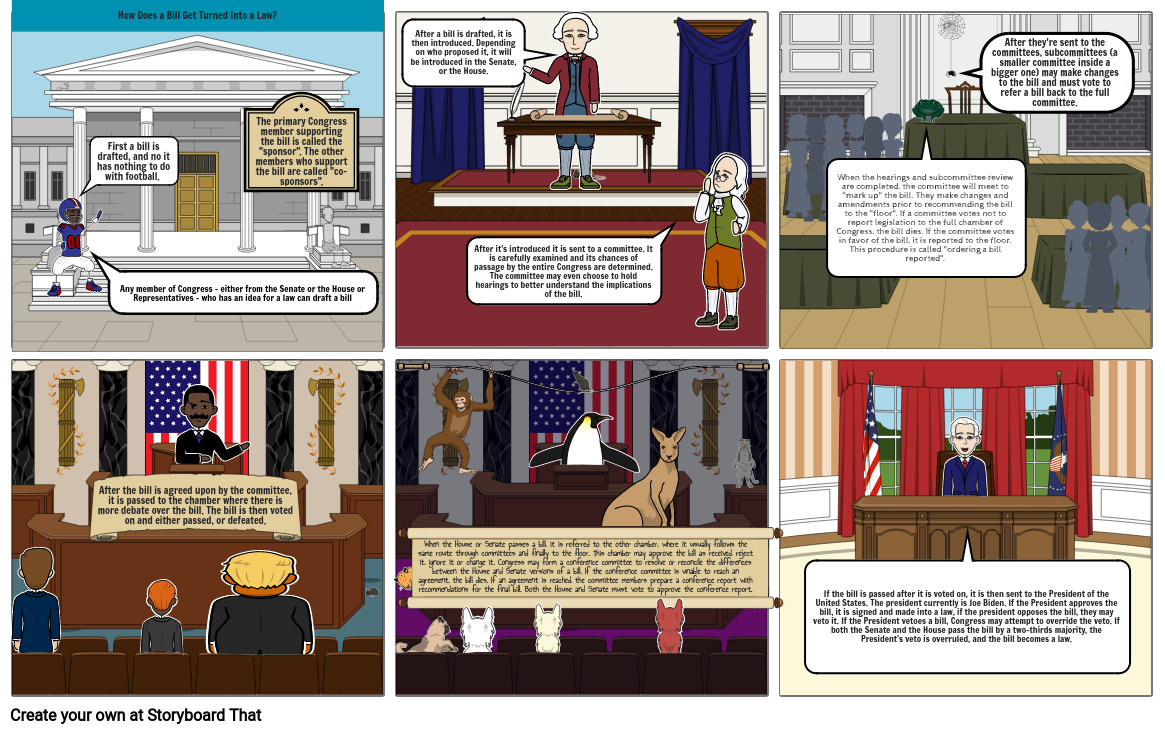How a bill becomes a law

Storyboard Text
- How Does a Bill Get Turned Into a Law?
- First a bill is drafted, and no it has nothing to do with football.
- Any member of Congress – either from the Senate or the House or Representatives – who has an idea for a law can draft a bill
- The primary Congress member supporting the bill is called the "sponsor". The other members who support the bill are called "co-sponsors".
- After it's introduced it is sent to a committee. It is carefully examined and its chances of passage by the entire Congress are determined. The committee may even choose to hold hearings to better understand the implications of the bill.
- After a bill is drafted, it is then introduced. Depending on who proposed it, it will be introduced in the Senate, or the House.
- When the hearings and subcommittee review are completed, the committee will meet to "mark up" the bill. They make changes and amendments prior to recommending the bill to the "floor". If a committee votes not to report legislation to the full chamber of Congress, the bill dies. If the committee votes in favor of the bill, it is reported to the floor. This procedure is called "ordering a bill reported".
- After they're sent to the committees, subcommittees (a smaller committee inside a bigger one) may make changes to the bill and must vote to refer a bill back to the full committee.
- After the bill is agreed upon by the committee, it is passed to the chamber where there is more debate over the bill. The bill is then voted on and either passed, or defeated.
- When the House or Senate passes a bill, it is referred to the other chamber, where it usually follows the same route through committees and finally to the floor. This chamber may approve the bill as received, reject it, ignore it or change it. Congress may form a conference committee to resolve or reconcile the differences between the House and Senate versions of a bill. If the conference committee is unable to reach an agreement, the bill dies. If an agreement is reached, the committee members prepare a conference report with recommendations for the final bill. Both the House and Senate must vote to approve the conference report.
- If the bill is passed after it is voted on, it is then sent to the President of the United States. The president currently is Joe Biden. If the President approves the bill, it is signed and made into a law, if the president opposes the bill, they may veto it. If the President vetoes a bill, Congress may attempt to override the veto. If both the Senate and the House pass the bill by a two-thirds majority, the President's veto is overruled, and the bill becomes a law.
Over 30 Million Storyboards Created

